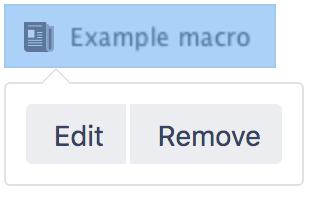Loremipsum Macro
Screenshot: a page with headings and the Loremipsum macro in place of actual content.
Add this macro to your page
To add the Loremipsum macro to a page:
- From the editor toolbar, choose Insert > Other Macros.
- Choose Loremipsum from the Development category.
- Enter the number of paragraphs to include.
- Choose Insert.
You can then publish your page to see the macro in action.
Change the macro parameters
Macro parameters are used to change the behaviour of a macro.
To change the macro parameters:
- In the editor, click the macro placeholder and choose Edit.
- Update the parameters as required then choose Insert.
Here's a list of the parameters available in this macro.
Parameter | Default | Description |
|---|---|---|
Number of Paragraphs | 3 | Determines the amount of placeholder text to display. The macro will display a maximum number of 30 paragraphs. Parameter is unnamed in storage format and wiki markup. |
Where the parameter name used in Confluence storage format or wikimarkup is different to the label used in the macro browser, it will be listed below in brackets (example).
Other ways to add this macro
Add this macro as you type
Add this macro using wiki markup
This is useful when you want to add a macro outside the editor, for example as custom content in the sidebar, header or footer of a space.
Macro name: loremipsum
Macro body: None.
{loremipsum:2}

